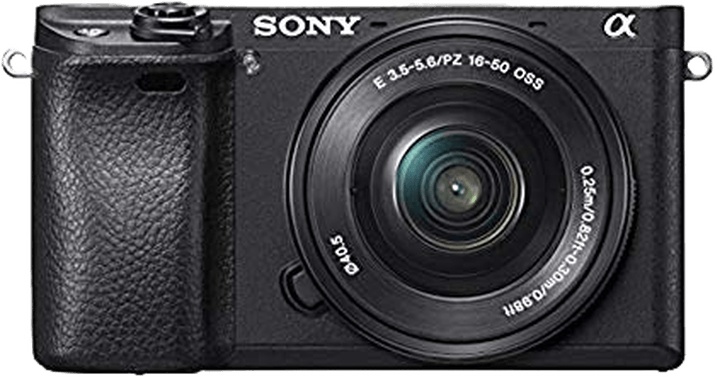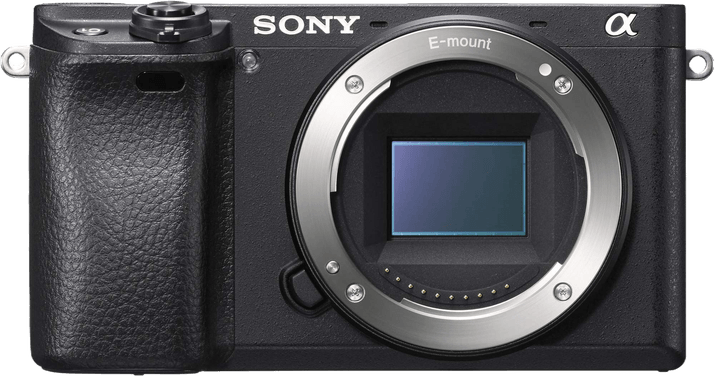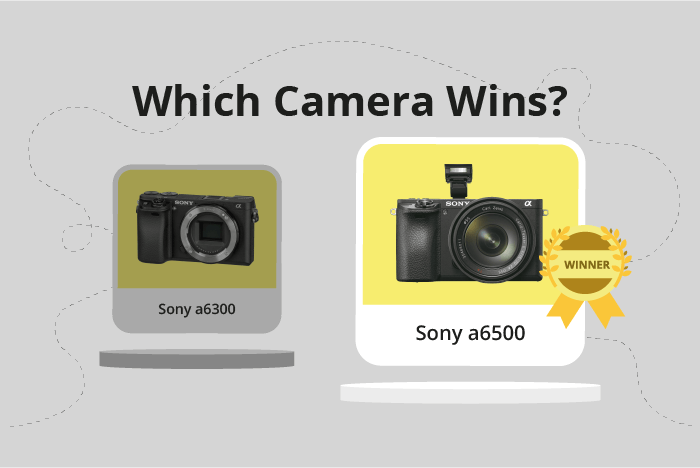Sony a6300 vs a6500 Comparison
Sony a6300

Sony a6500

The Sony a6500 emerges as the winner with a score of 72/100, while the Sony a6300 trails behind at 61/100. Both cameras are mirrorless and were released in 2016. They share similar dimensions, with the a6500 being slightly larger at 120 x 67 x 53mm and heavier at 453g, compared to the a6300’s 120 x 67 x 49mm and 404g.
The a6500 outperforms the a6300 with its higher score, which is justified by its improved features and performance. On the other hand, the a6300 has a lower launch price of $1000, making it a more budget-friendly option compared to the a6500’s $1400 price tag.
Considering the specifications and scores, the Sony a6500 is the superior camera, offering better performance and features. However, the Sony a6300 may be a more attractive choice for those seeking a more affordable option without compromising too much on quality.
Sony a6300 vs a6500 Overview and Optics
The Sony a6500 is the winner in the optics comparison, scoring 74/100, while the Sony a6300 scores 68/100. Both cameras share several key specifications, such as 24.2 megapixels, 11 shooting speed, CMOS sensor type, Bionz X processor, 85 DXOMARK score for the sensor, APS-C sensor size, and Sony E lens mount.
The Sony a6500 outperforms the a6300 in terms of image stabilization. This feature is crucial for capturing sharp images, especially in low light conditions or when using telephoto lenses. The a6500’s image stabilization helps to reduce camera shake, resulting in clearer and more stable images.
On the other hand, the Sony a6300 does not offer any significant advantages over the a6500 in the optics department. Both cameras have the same sensor, processor, and lens mount, meaning they perform similarly in terms of image quality and lens compatibility.
In light of these comparisons, it is clear that the Sony a6500 is the superior camera in terms of optics. Its image stabilization feature makes it a more versatile option for photographers who require steadier shots in various conditions. The Sony a6300, while still a solid camera, does not provide any notable benefits over its counterpart, making the a6500 the better choice for those focused on the camera’s optics.
Sony a6300 vs a6500 Video Performance
The Sony a6300 outperforms the Sony a6500 in video capabilities, scoring 91 out of 100, while the a6500 scores 77. Both cameras share key video specifications, such as 4K max video resolution, 3840 x 2160 video dimensions, and a 120fps max video frame rate. However, the a6300 surpasses the a6500 in a few areas, making it the superior choice for video shooting.
The a6300 has a built-in time-lapse functionality, which the a6500 lacks. This feature allows users to create stunning time-lapse videos without requiring additional software or equipment. The built-in time-lapse functionality simplifies the process and provides a more user-friendly experience for those who enjoy capturing time-lapse sequences.
On the other hand, the a6500 does not have any specific advantages over the a6300 in terms of video capabilities. Both cameras share the same core video specifications, making the a6300 a better option due to its additional time-lapse feature.
Considering these points, the Sony a6300 is the clear winner in video capabilities when compared to the Sony a6500. Its built-in time-lapse functionality sets it apart from the competition, making it a more versatile and user-friendly option for video enthusiasts. The a6500, while still a solid choice for photography, falls short in the video department, making the a6300 the preferable choice for those prioritizing video performance.
Sony a6300 vs a6500 Features and Benefits
The Sony a6500 triumphs over the Sony a6300 with a feature score of 81/100, compared to the a6300’s score of 54/100. Both cameras share specific features, such as a 3-inch screen size, 921600-dot screen resolution, flip screen, lack of GPS, and Wi-Fi capability. However, the a6500 has additional features that contribute to its higher score.
The a6500 outperforms the a6300 in two significant aspects: touchscreen functionality and Bluetooth connectivity. The touchscreen allows for easier navigation and control, while the Bluetooth feature provides more accessible file transfer and remote control options. These additional features make the a6500 a more user-friendly and versatile camera.
The a6300, though scoring lower, still offers some advantages. The camera’s flip screen and Wi-Fi capability provide flexibility in shooting angles and ease of sharing images. However, it lacks the touchscreen and Bluetooth features that give the a6500 an edge in usability.
Comparing the two cameras, the Sony a6500 proves to be the superior option due to its touchscreen and Bluetooth capabilities. These added features enhance the camera’s overall user experience and adaptability. Meanwhile, the Sony a6300 remains a viable option for those seeking a camera with a flip screen and Wi-Fi connectivity, but it falls short in comparison to the a6500. The higher feature score of the a6500 reflects its improved functionality and versatility, making it the better choice between the two models.
Sony a6300 vs a6500 Storage and Battery
The Sony a6300 has a higher storage and battery score of 24/100, while the Sony a6500 scores 21/100. Both cameras share common specs: a single memory card slot, compatibility with SD/SDHC/SDXC memory cards, and the NP-FW50 battery type. Neither camera offers USB charging.
The a6300 is superior in battery life, providing 400 shots compared to the a6500’s 350 shots. This extended battery life makes the a6300 more convenient for longer shooting sessions. However, the a6500 has an advantage in memory card compatibility, as it also accepts Memory Stick Pro Duo cards, offering more storage options to photographers.
Considering the storage and battery aspects, the Sony a6300 edges out the a6500 due to its longer battery life. The a6500’s additional memory card compatibility is a nice feature, but the a6300’s advantage in battery life is more significant for most users.
Alternatives to the Sony a6300 and a6500
Are you still undecided about which camera is right for you? Have a look at these popular comparisons that feature the Sony a6300 or the Sony a6500:

